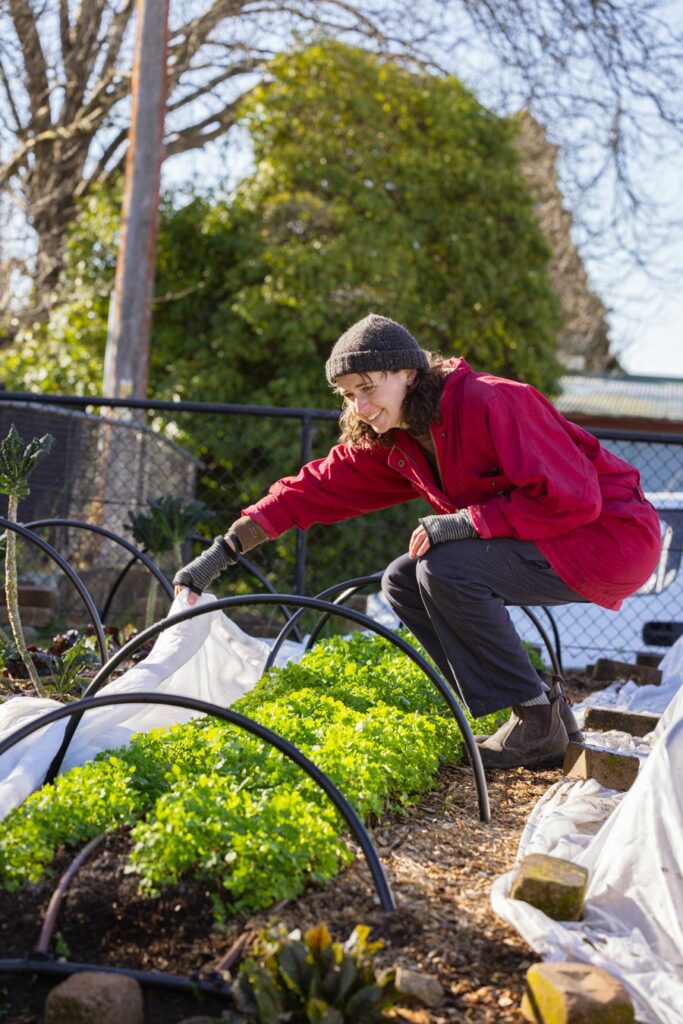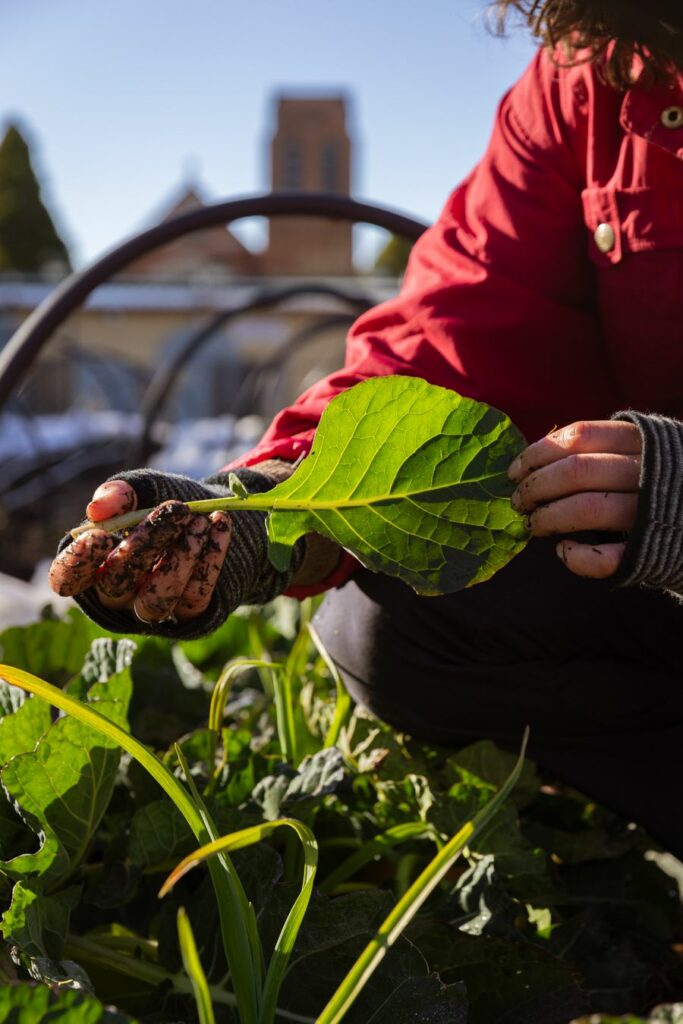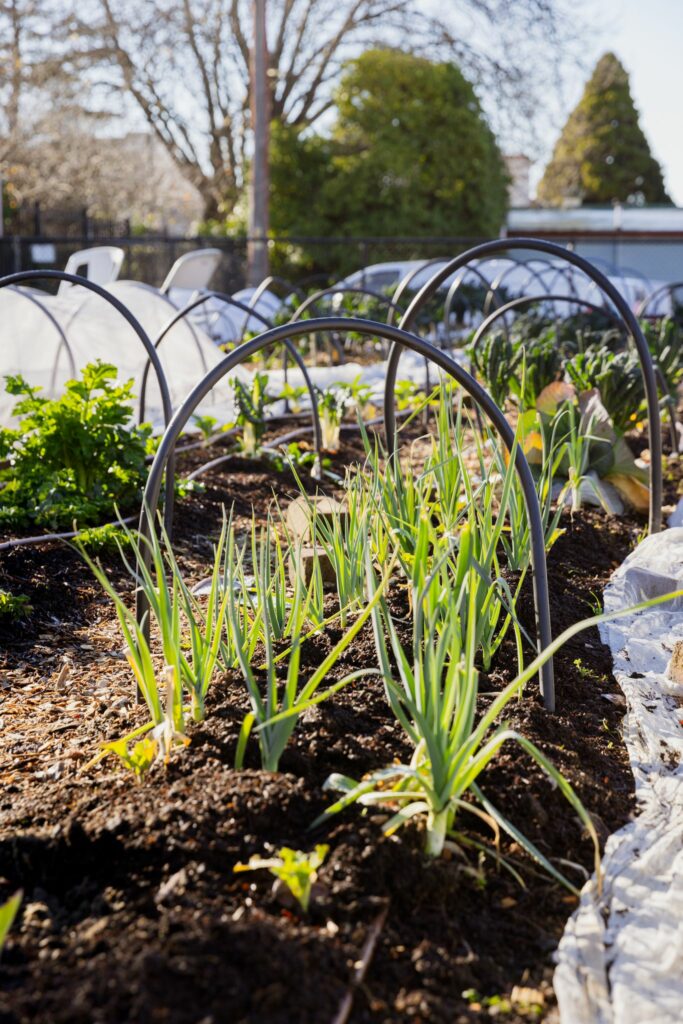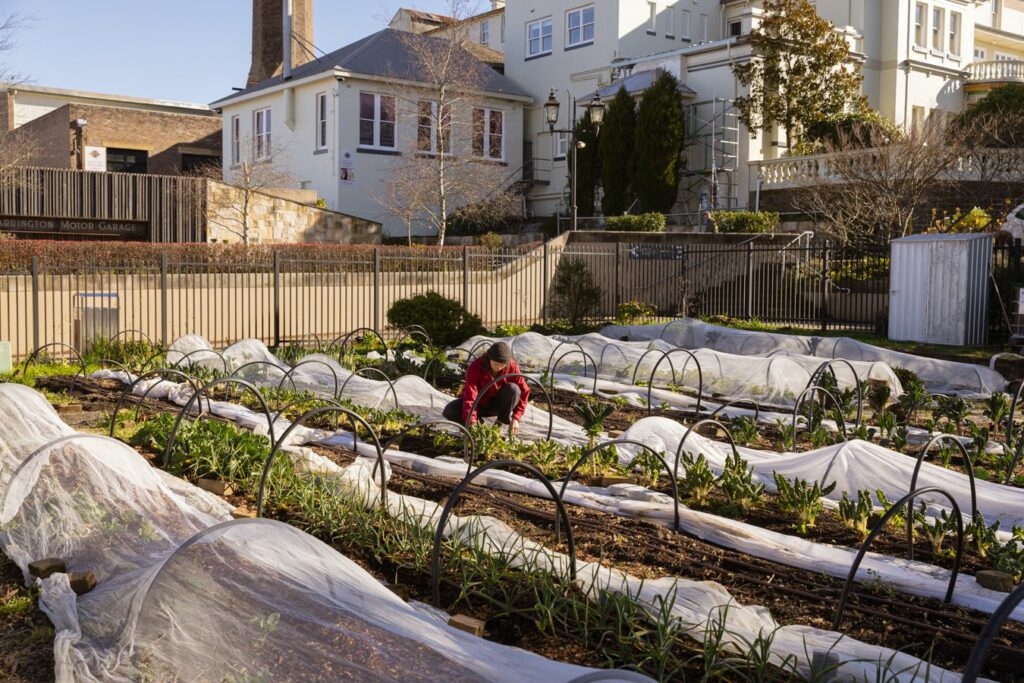Avoiding the “Hungry Gap”
Blue Mountains Food Co-op market gardener, Hannah Axelsen, shares her tips for preparing for the “hungry gap” in upper mountains food gardens.

When I first began gardening in Katoomba, I eagerly awaited the arrival of spring after a long and icy winter. However, when spring finally came, I noticed a challenging period in the garden known as the Hungry Gap. During this time, plants tended to bolt, and frosty mornings lingered, causing slow growth. Traditionally, the Hungry Gap was a period when winter crops had ended, and new plantings weren’t yet ready for harvest. In the past, people had to survive on old potatoes, preserves, and pickles, leading to a scarcity of fresh produce and hunger. Nowadays, knowledge of the Hungry Gap is relatively rare since supermarkets import food from all over the world to fill this seasonal transition period, and not many people eat strictly locally or seasonally.
There are various planting strategies you can adopt at the end of winter to address the Hungry Gap. One option is growing microgreens in your greenhouse or on your windowsill to supplement your greens during these months. Additionally, you can grow snow peas, lettuce, rocket, and other crops in a greenhouse, which will significantly help with availability. And don’t forget about using old garlic cloves; when they shoot you can plant them, cut them and use as garlic chives. It is also possible for late summer plantings to keep you going, such as cabbages, swedes, turnips, parsnips, and carrots. These will most likely bolt sometime in August, but if you pull them and store correctly, they will be fine.

For quick-growing crops that can still thrive during the Hungry Gap, consider planting radish, rocket, mizuna, and turnips, but be sure to harvest them promptly to prevent bolting – a survival mechanism in which the plant produces seeds. To prepare for spring, in August, you can sow broad beans, purple sprouting broccoli, coriander, peas, silverbeet, spinach, and spring onions.
As early September approaches, it’s time to start planting out seedlings of lettuce, kale, kohlrabi, collards, dill, leeks, onions, parsley, coriander, beetroot, and chives. You can also plant potatoes during this time. Look for slow bolting varieties to ensure better success. Keep in mind that each year can vary in terms of seasonal timing, so observe your own garden for signs of frost damage and watch out for any late frosts before transplanting these seedlings.

A friend of mine in Katoomba plants potatoes and tomatoes (from seed) – usually late August/early September without major frost issues, though they do keep an eye out for a late one and cover as needed with frost fleece.
Around this period, if you have a greenhouse, it’s an ideal time to sow seeds for your upcoming summer crops, such as zucchinis, cucumbers, squash, and pumpkins. You can also sow these seeds directly in the garden – if there aren’t late frosts, they’ll be ok. Proper planning and observation of your garden’s unique conditions will help you make the most of the Hungry Gap and ensure a bountiful harvest in seasons to come.
Don’t forget you can buy a wide range of organic, non-hybrid, and open pollinated vegie, herb, and flower seeds at the Co-op. Just $4.05 for members and $4.50 for non-members.
Plus, give your garden a boost with our very own market garden worm juice. 5 litres undiluted just $19.75 for members and $21.95 for non-members.

Photos taken in our market garden by Maja Baska


